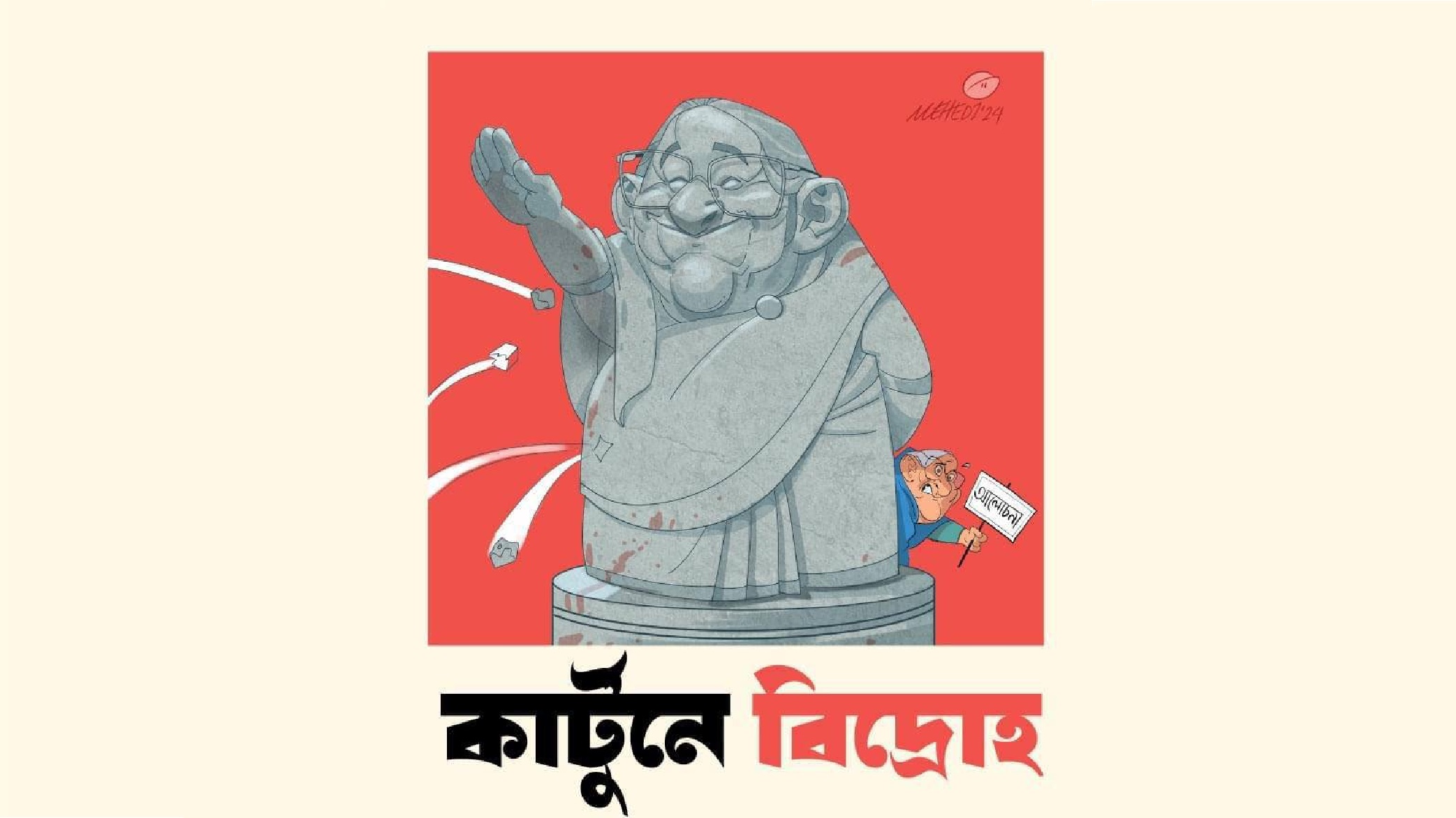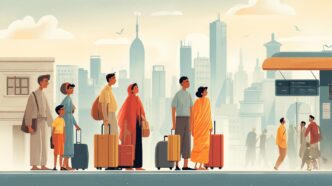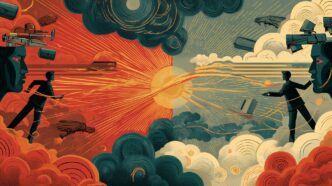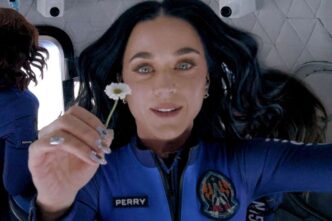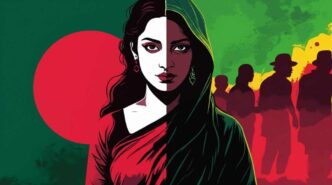“I am deeply gratified that the freedom to draw political cartoons has been restored in Bangladesh. Before 2006, Bangladeshi cartoonists, especially Shishir Bhattacharjee, often created cartoons about my mother and me. However, over the past 15 years, we have seen cartoonist Ahmed Kabir Kishore subjected to enforced disappearance, enduring unimaginable torture and imprisonment for his work. Many others have faced similar repression. Shishir Bhattacharjee eventually stopped creating cartoons altogether. I am a fan of cartoonist Mehedi, and I used to enjoy Shishir Bhattacharjee’s work as well. I sincerely hope that he will soon start creating political cartoons regularly once again.”
Tarique Rahman and his mother were at the root of many corrupt practices and atrocities during their time ruling this country. However, this is one of the very few things where the BNP can be given their due credit: freedom of the press and speech. Even though I am well aware that this is our right and the bare minimum, being suppressed under an autocratic regime where every word needs to be carefully calculated in fear of enforced disappearance for a very long 15 years, this is a welcome change.
Art, and specifically caricature and satirical cartoons, have been a significant part of politics and revolution in the history of Bangladesh. Whether it be Yahya Khan depicted as a demon by Kamrul Hasan in 1971, calling for their annihilation, or Shishir Bhattacharjee’s satirical work on the front pages of Prothom Alo throughout the 90s and early 2000s, cartoons have always had the ability to simplify and exaggerate complex issues to stir the general public. They have the power to trigger the right people and point them toward their actions, something corrupt governments don’t always appreciate.
Cartoons have long evolved from being something children would watch for entertainment to a diverse and complex art form that speaks volumes in its portrayals of current events. Using humor, irony, and exaggeration for political commentary to critique political figures, policies, and social issues to overthrowing the autocratic and fascist regime of dictator Sheikh Hasina, cartoons were at the heart of this student movement that led to the “second independence of Bangladesh.”
Drik Gallery, the picture gallery founded by Photographer-Journalist Shahidul Alam, situated at Panthapath, Dhaka, has taken the initiative to platform these timely arts that worked as a catalyst in this movement. In this week-long event from August 16-23 (3 pm – 8 pm), cartoons from 25+ artists with various art styles and calibers have been displayed. But the essence of them all is the same: resistance against a fascist regime. The color red was the theme of the exhibition, and although these artworks were made independently, they all seemed to have a prominence of red in their art. But this is hardly a coincidence. The color of rebellion is red.
A perplexed and scared Hasina sheltering behind a statue of herself doing the Nazi salute, carrying a board that says “আলোচনা”: The cover art for this exhibition was done by artist Mehedi Haque. The statue encapsulates the narcissism and ego of Sheikh Hasina, and the Nazi salute depicts her ruthless dictatorship. But that’s the thing about fear. If you try to suppress a nation with fear for long enough, it loses the power to make people afraid. If you suppress and scare a nation for years on end, one day the fear dissolves, and people start to resist fiercely. The 2018 road safety movement and the quota reform protest were sparks that ignited the fire of July 2024. Hasina’s face showed the fear that the anger of the people wouldn’t be mollified with a simple call for “discussion.” There was nothing to discuss when innocent blood had been spilled. After years of ruthless killings with no investigation, let alone justice, this was the last straw, and thus began the 1-point movement.
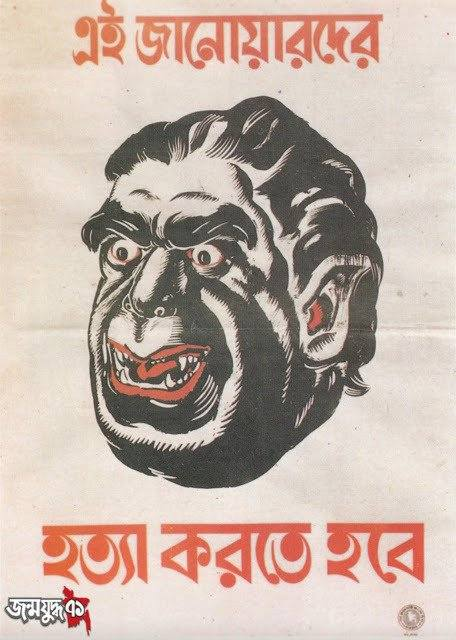
Walking through the gallery, the artwork showcased the timeline and stories beautifully. Whether it be Mehedi Haque’s caricature art or Debashish Chakrabarty’s recognizable posters in red and yellow, all contributed to fueling the anger of the people against oppressive forces and making this movement successful. Cartoonists used their art to recognize the numerous contradictory and absurd comments by politicians for what they are, stripping them of their sugar-coated absurdities and displaying them as what they are: poorly disguised BAL propaganda.
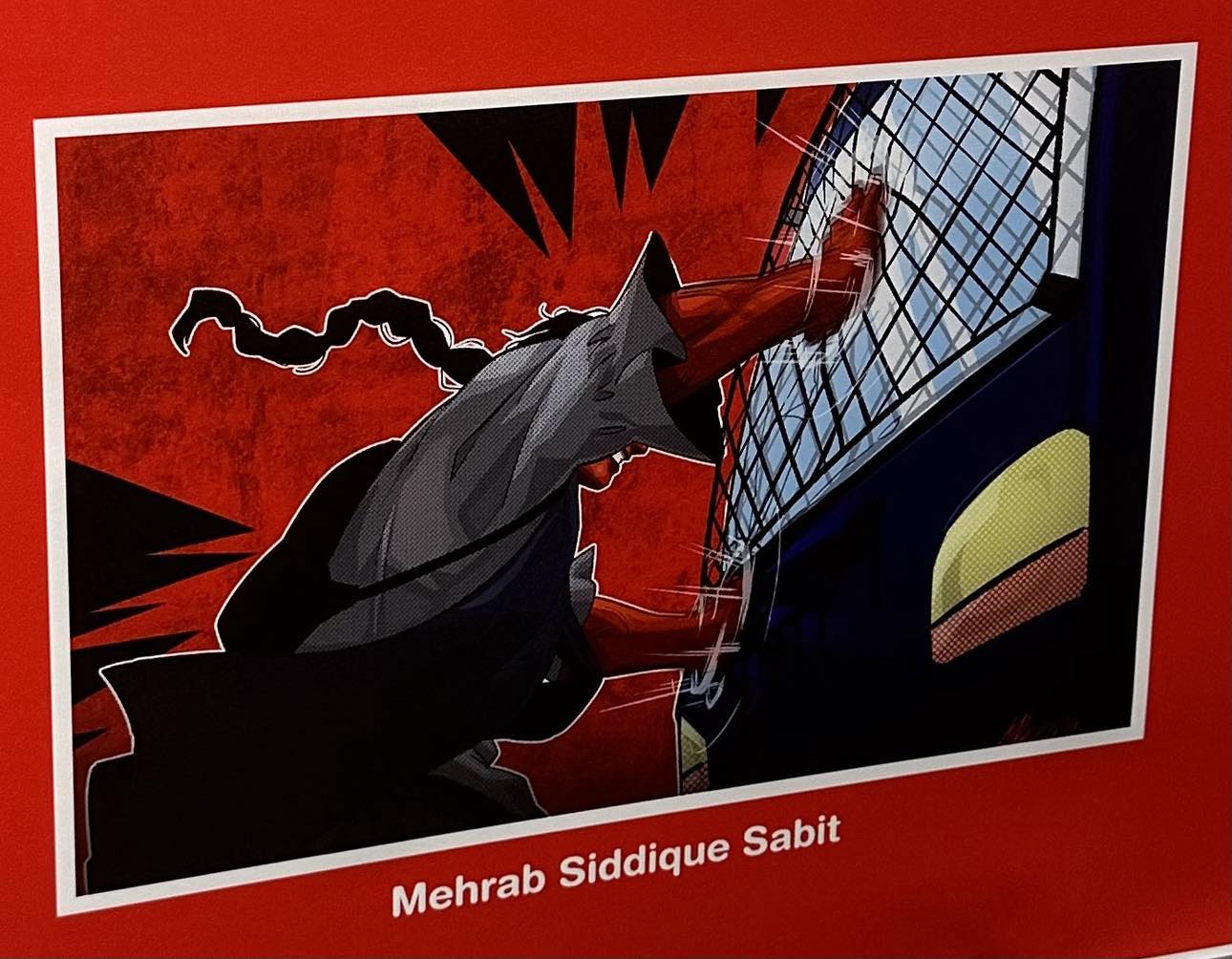
There were also beautiful renditions of statement-making protest photographs. The image of a sister stopping a police van by herself so they couldn’t take away her brother was depicted as a She-Hulk. The fiery eyes of a boy in the police van, showing no sign of fear—just pure hatred and anger—in hues of red. Or a cop portrayed as a pig trying to gag a man explaining that it is not legal to arrest peaceful protesters.
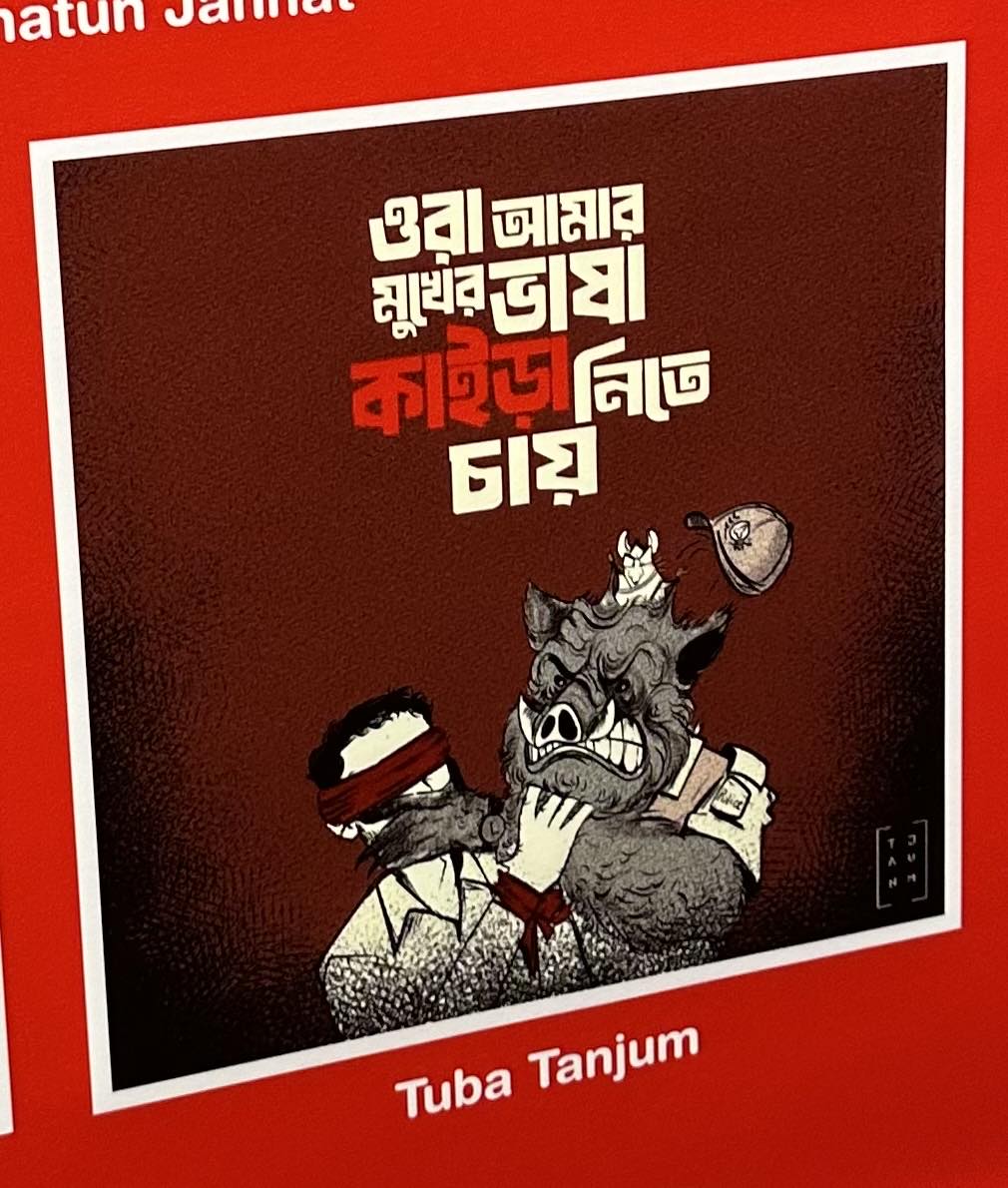
Morshed Mishu’s painting of Abu Sayed’s outstretched arms as a candle flame that died out from a bullet but lit up thousands more similar ones in its wake reminded me of Jahir Raihan’s famous line that came up many times during this movement: “আসছে ফাল্গুনে আমরা কিন্তু দ্বিগুণ হবো.”
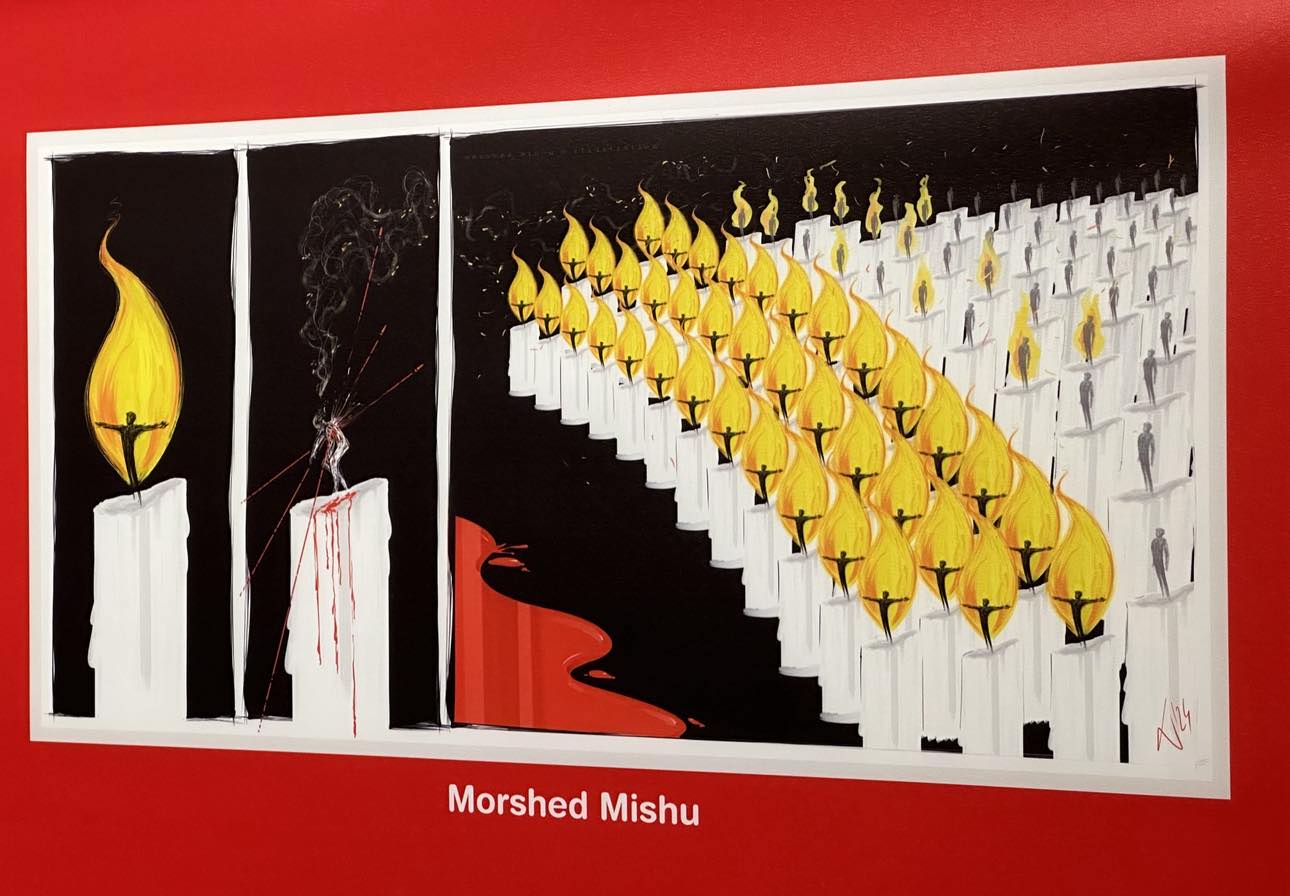
The exhibition featured a variety of art forms. There were graffiti-esque drapes hanging from walls, radio playing underground rebellious rap about the movement like Shezan’s Kotha Ko or Hannan’s Awaaz Utha. Bottles of water were hanging from the ceiling with Mugdho’s name written in red print on them.
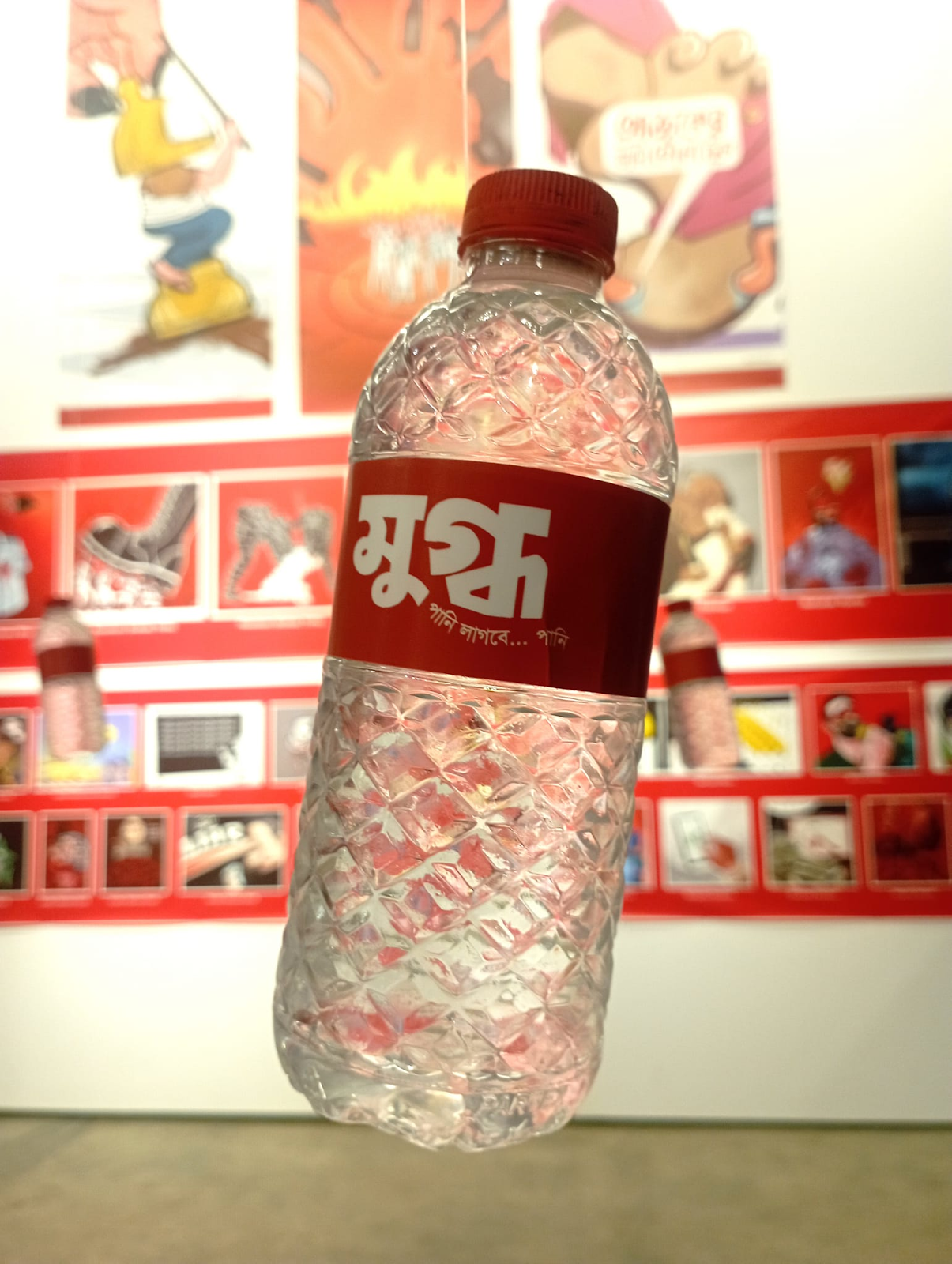
Mugdho, a student of BUP, who was not even an active protester and just wanted to distribute water to those who were protesting, was shot in the head by police forces. The state of suspension was reminiscent of the bottle falling from his hands as it was drenched in his blood.

Drik has always made a point to challenge authorities about their abuse of power through its art and photography. Now, 30 years since its inception, Drik has stayed on the right side of history, using the power of photography and press to tell stories that corrupt leaders want to bury. Amidst Drik’s 30 years of resistance, there have been many instances where obstacles and oppressive forces tried to suppress their voices. But that has never stopped Shahidul Alam and the Drik team from speaking up against the injustices committed by ex-Prime Minister Sheikh Hasina and the Awami League. He was even unlawfully detained and jailed for 107 days for speaking up against the government in the student-led Road Safety Movement of 2018 but his voice was just as loud, if not more so in the movement of 2024.
Although the students have managed to save the nation from the death grip of Hasina, there is a long road ahead in terms of reformation for the state. Oppressive powers all over the world need to be stopped. This exhibition reinforces the fact that if united, we, the common people, can defeat even the worst of oppressive forces.
If you go to see the exhibition—which you definitely should, and I highly recommend it—you’ll notice Palestinian flags and keffiyehs in several places. As a regular visitor, I have always admired that about Drik. They had these much before October 7, 2023. But I truly wish that all oppressed people get to be free from their oppressors. All power to the people. And Free Palestine.”
